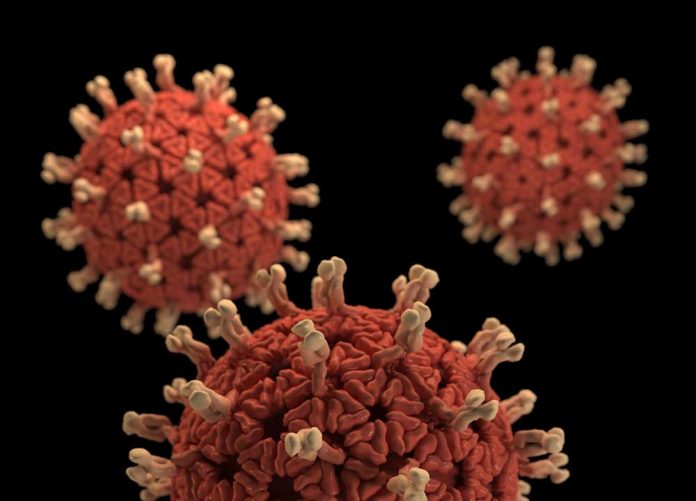Coronaviruses are RNA ವೈರಸ್ಗಳು belonging to coronaviridae family. These ವೈರಸ್ಗಳು display remarkably high rates of errors during replication due to lack of proofreading nuclease activity of their polymerases. In other organisms, the replication errors are corrected but the coronaviruses lack this ability. As a result, replication errors in coronaviruses remain uncorrected and accumulate which in turn act as source of variation and adaptation in these ವೈರಸ್ಗಳು. Thus, it has always been nature of things for the coronaviruses to undergo mutation in their genomes at extremely high rates; more the transmission, more replication errors happen and hence more mutations in the genome leading to more ರೂಪಾಂತರಗಳು ಪರಿಣಾಮವಾಗಿ.
ನಿಸ್ಸಂಶಯವಾಗಿ, ಹೊಸದಕ್ಕೆ ಬದಲಾಗುತ್ತಿದೆ ರೂಪಾಂತರಗಳು is not new to ಕರೋನವೈರಸ್ಗಳು. ಮಾನವ ಕರೋನವೈರಸ್ಗಳು have been building up mutations to new forms in the recent history. There were several ರೂಪಾಂತರಗಳು responsible for various epidemics since 1966, when the first episode was recorded.
The SARS-CoV was the first lethal variant that caused ಕಾರೋನವೈರಸ್ epidemic in Guangdong Province of China in 2002. MERS-CoV was the next important variant that caused epidemic in Saudi Arabia in 2012.
ಕಾದಂಬರಿ ಕಾರೋನವೈರಸ್ SARS-CoV-2, the variant responsible for the current COVID-19 pandemic that started in December 2019 in Wuhan, China and subsequently spread worldwide to become the first ಕಾರೋನವೈರಸ್ pandemic in the human history, has continuously undergone further adaptation accumulating mutations in different geographical regions giving rise to several sub-ರೂಪಾಂತರಗಳು. These sub-ರೂಪಾಂತರಗಳು have minor differences in their genome and the spike proteins and show differences in their transmission rate, virulence and immune escape infectivity.
Based on the threat that these sub-variants pose, they are grouped into three categories – ಮಾರ್ಪಾಟುಗಳು of concern (VOC), Variants of interest or Variants under investigation (VOI) and Variants under monitoring. This grouping of sub-variants is based on evidences related to transmissibility, immunity and severity of infection.
- ಕಾಳಜಿಯ ರೂಪಾಂತರಗಳು (VOC)
ಪ್ರಸ್ತುತ ಬಳಕೆಯಲ್ಲಿರುವ ಲಸಿಕೆಗಳ ಪರಿಣಾಮಕಾರಿತ್ವದಂತಹ ಯಾವುದೇ ಸಾರ್ವಜನಿಕ ಆರೋಗ್ಯ ಕ್ರಮಗಳ ಪ್ರಸರಣ ಅಥವಾ ವೈರಲೆನ್ಸ್ ಅಥವಾ ಪರಿಣಾಮಕಾರಿತ್ವದಲ್ಲಿನ ಇಳಿಕೆಯೊಂದಿಗೆ ಕಾಳಜಿಯ ರೂಪಾಂತರಗಳು (VOC) ಸ್ಪಷ್ಟವಾದ ಸಂಬಂಧವನ್ನು ಹೊಂದಿವೆ.
| WHO ಲೇಬಲ್ | ವಂಶಾವಳಿಗಳು | ಮೊದಲು ಪತ್ತೆಯಾದ ದೇಶ (ಸಮುದಾಯ) | ವರ್ಷ ಮತ್ತು ತಿಂಗಳು ಮೊದಲು ಪತ್ತೆಯಾಗಿದೆ |
| ಆಲ್ಫಾ | ಬಿ .1.1.7 | ಯುನೈಟೆಡ್ ಕಿಂಗ್ಡಮ್ | ಸೆಪ್ಟೆಂಬರ್ 2020 |
| ಬೀಟಾ | ಬಿ .1.351 | ದಕ್ಷಿಣ ಆಫ್ರಿಕಾ | ಸೆಪ್ಟೆಂಬರ್ 2020 |
| ಗಾಮಾ | ಪು .1 | ಬ್ರೆಜಿಲ್ | ಡಿಸೆಂಬರ್ 2020 |
| ಡೆಲ್ಟಾ | ಬಿ .1.617.2 | ಭಾರತದ ಸಂವಿಧಾನ | ಡಿಸೆಂಬರ್ 2020 |
- ಆಸಕ್ತಿಯ ರೂಪಾಂತರಗಳು ಅಥವಾ ತನಿಖೆಯಲ್ಲಿರುವ ರೂಪಾಂತರಗಳು (VOI)
ಆಸಕ್ತಿಯ ರೂಪಾಂತರಗಳು ಅಥವಾ ತನಿಖೆಯಲ್ಲಿರುವ ರೂಪಾಂತರಗಳು (VOI) ಆನುವಂಶಿಕ ಬದಲಾವಣೆಗಳನ್ನು ಹೊಂದಿದ್ದು ಅದು ಅದರ ಹರಡುವಿಕೆ, ವೈರಸ್ ಅಥವಾ ಸಾರ್ವಜನಿಕ ಆರೋಗ್ಯ ಕ್ರಮಗಳ ಪರಿಣಾಮಕಾರಿತ್ವದ ಮೇಲೆ ಪರಿಣಾಮ ಬೀರಬಹುದು ಮತ್ತು ಗಮನಾರ್ಹವಾದ ಸಮುದಾಯ ಪ್ರಸರಣವನ್ನು ಉಂಟುಮಾಡುತ್ತದೆ ಎಂದು ಗುರುತಿಸಲಾಗಿದೆ.
| WHO ಲೇಬಲ್ | ವಂಶಾವಳಿಗಳು | ಮೊದಲು ಪತ್ತೆಯಾದ ದೇಶ (ಸಮುದಾಯ) | ವರ್ಷ ಮತ್ತು ತಿಂಗಳು ಮೊದಲು ಪತ್ತೆಯಾಗಿದೆ |
| ಇಟಾ | ಬಿ .1.525 | ನೈಜೀರಿಯ | ಡಿಸೆಂಬರ್ 2020 |
| ಐಯೊಟಾ | ಬಿ .1.526 | ಅಮೇರಿಕಾ | ನವೆಂಬರ್ 2020 |
| ಕಪ್ಪಾ | ಬಿ .1.617.1 | ಭಾರತದ ಸಂವಿಧಾನ | ಡಿಸೆಂಬರ್ 2020 |
| ಲಾಂಬ್ಡಾದೊಂದಿಗೆ | C.37 | ಪೆರು | ಡಿಸೆಂಬರ್ 2020 |
- ಮೇಲ್ವಿಚಾರಣೆಯಲ್ಲಿರುವ ರೂಪಾಂತರಗಳು
ಮೇಲ್ವಿಚಾರಣೆಯಲ್ಲಿರುವ ರೂಪಾಂತರಗಳನ್ನು ಸಂಕೇತಗಳಾಗಿ ಪತ್ತೆ ಮಾಡಲಾಗುತ್ತದೆ ಮತ್ತು ಅವುಗಳು VOC ಯಂತೆಯೇ ಗುಣಲಕ್ಷಣಗಳನ್ನು ಹೊಂದಿರಬಹುದು ಆದರೆ ಸಾಕ್ಷ್ಯವು ದುರ್ಬಲವಾಗಿರಬಹುದು ಎಂಬ ಸೂಚನೆಯಿದೆ. ಆದ್ದರಿಂದ, ಯಾವುದೇ ಬದಲಾವಣೆಗಾಗಿ ಈ ರೂಪಾಂತರಗಳನ್ನು ನಿರಂತರವಾಗಿ ಮೇಲ್ವಿಚಾರಣೆ ಮಾಡಲಾಗುತ್ತದೆ.
| WHO ಲೇಬಲ್ | ವಂಶಾವಳಿಗಳು | ಮೊದಲು ಪತ್ತೆಯಾದ ದೇಶ (ಸಮುದಾಯ) | ವರ್ಷ ಮತ್ತು ತಿಂಗಳು ಮೊದಲು ಪತ್ತೆಯಾಗಿದೆ |
| ಬಿ .1.617.3 | ಭಾರತದ ಸಂವಿಧಾನ | ಫೆಬ್ರವರಿ 2021 | |
| A.23.1+E484K | ಯುನೈಟೆಡ್ ಕಿಂಗ್ಡಮ್ | ಡಿಸೆಂಬರ್ 2020 | |
| ಲಾಂಬ್ಡಾದೊಂದಿಗೆ | C.37 | ಪೆರು | ಡಿಸೆಂಬರ್ 2020 |
| B.1.351+P384L | ದಕ್ಷಿಣ ಆಫ್ರಿಕಾ | ಡಿಸೆಂಬರ್ 2020 | |
| B.1.1.7+L452R | ಯುನೈಟೆಡ್ ಕಿಂಗ್ಡಮ್ | ಜನವರಿ 2021 | |
| B.1.1.7+S494P | ಯುನೈಟೆಡ್ ಕಿಂಗ್ಡಮ್ | ಜನವರಿ 2021 | |
| C.36+L452R | ಈಜಿಪ್ಟ್ | ಡಿಸೆಂಬರ್ 2020 | |
| ಎಟಿ.1 | ರಶಿಯಾ | ಜನವರಿ 2021 | |
| ಐಯೊಟಾ | ಬಿ .1.526 | ಅಮೇರಿಕಾ | ಡಿಸೆಂಬರ್ 2020 |
| Eta ೀಟಾ | ಪು .2 | ಬ್ರೆಜಿಲ್ | ಜನವರಿ 2021 |
| AV.1 | ಯುನೈಟೆಡ್ ಕಿಂಗ್ಡಮ್ | ಮಾರ್ಚ್ 2021 | |
| P.1+P681H | ಇಟಲಿ | ಫೆಬ್ರವರಿ 2021 | |
| B.1.671.2 + K417N | ಯುನೈಟೆಡ್ ಕಿಂಗ್ಡಮ್ | ಜೂನ್ 2021 |
ಈ ಗುಂಪು ಮಾಡುವಿಕೆಯು ಕ್ರಿಯಾತ್ಮಕವಾಗಿದೆ ಎಂದರೆ ಉಪ-ವ್ಯತ್ಯಯಗಳನ್ನು ಒಂದು ಗುಂಪಿನಿಂದ ತೆಗೆದುಹಾಕಬಹುದು ಅಥವಾ ಪ್ರಸರಣ, ವಿನಾಯಿತಿ ಮತ್ತು ಸೋಂಕಿನ ತೀವ್ರತೆಯ ವಿಷಯದಲ್ಲಿ ಬೆದರಿಕೆಗಳ ಮೌಲ್ಯಮಾಪನದಲ್ಲಿನ ಬದಲಾವಣೆಯನ್ನು ಅವಲಂಬಿಸಿ ಯಾವುದೇ ಗುಂಪಿನಲ್ಲಿ ಸೇರಿಸಬಹುದು.
Ironically, evolution of SAR-CoV-2 currently seems to be ongoing process. Going by the nature of this ವೈರಸ್, so long there is transmission among humans there will be replication errors and mutations. Some mutant or variant may overcome the selection pressure to become more infectious and virulent or escape immune response to make vaccine less effective. Possibly, many more variants will be detected in due course in the regions of higher transmission. Minimising transmission and constant monitoring are the key to containment strategies.
***
ಮೂಲಗಳು:
- Prasad U., 2021. New Strains of SARS-CoV-2 (the ವೈರಸ್ responsible for COVID-19): Could ‘Neutralising Antibodies’ Approach be Answer to Rapid Mutation? Scientific European. Posted 23 December 2020. Available online at http://scientificeuropean.co.uk/medicine/new-strains-of-sars-cov-2-the-virus-responsible-for-covid-19-could-neutralising-antibodies-approach-be-answer-to-rapid-mutation/
- WHO, 2021. ಟ್ರ್ಯಾಕಿಂಗ್ SARS-CoV-2 ರೂಪಾಂತರಗಳು. ನಲ್ಲಿ ಆನ್ಲೈನ್ನಲ್ಲಿ ಲಭ್ಯವಿದೆ https://www.who.int/en/activities/tracking-SARS-CoV-2-variants/
- ECDPC 2021. 2 ಜುಲೈ 8 ರಂತೆ ಕಾಳಜಿಯ SARS-CoV-2021 ರೂಪಾಂತರಗಳು. ಆನ್ಲೈನ್ನಲ್ಲಿ ಇಲ್ಲಿ ಲಭ್ಯವಿದೆ https://www.ecdc.europa.eu/en/covid-19/variants-concern
***






































